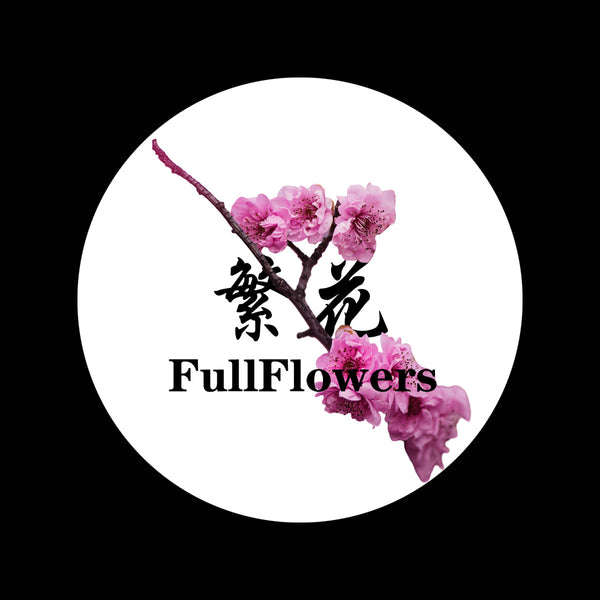
The Differences Between Ronghua and Chanhua
Share
The Difference Between Ronghua(Velvet flowers) and Chanhua(Wrapping flowers)
1. Differences in Appearance:
Ronghua(Velvet flowers):
Ronghua has a greater variety of styles and is lighter in texture, making it suitable for creating flowers, birds, insects, fish, and more. It can be generally categorized into velvet strips, velvet balls, and flat velvet style. These categories can be further subdivided, as detailed in the introduction article on Ronghua, so they won't be elaborated on here.
- Velvet strips and Velvet balls focus on birds, beasts, insects, fish, and fruits.
- Flat velvet style emphasizes flowers and butterflies.
The most notable characteristic of velvet strips and velvet balls is the distinct, delicate, and soft silk threads, offering exceptional visual appeal and enjoyment.
thick velvet strip Ronghua
Velvet balls are made primarily of raw silk, which is slightly stiff and can be touched and played with by hand.
Velvet strips are divided into thick velvet strip and thin velvet strip varieties. Thin velvet strips are mainly for display, while thick velvet strips can be gently blown on to make the silk move with the breath, creating a soft and delicate ripple effect, like wind brushing over water (they should not be touched by hand).
thin velvet strip Ronghua
Compared to Chanhua, flat velvet style Ronghua is lighter and has more varied shapes. Compared to heated flowers and silk flowers, Ronghua is easier to shape and can incorporate traditional crafts like filigree, floral silk, gold stamping, gold painting, and mother-of-pearl inlay, as well as modern techniques like glitter and resin.
Flat style Ronghua with droplets of glue added to the petals
Incorporating filigree craftsmanship, with filigree edging Ronghua
Incorporating Wire Inlay Technology, Wire Inlay Technology edging Ronghua
The surface of dragonfly wings is coated with glitter,Ronghua
flat velvet style Ronghua
The richness of Ronghua products is unparalleled in any other form of handicraft, which greatly stimulates the creativity of the creator. This is the greatest charm of Ronghua and the key reason it has been passed down for over a thousand years.
The golden part on the iris flower is covered with artificial gold foil,Ronghua
Chanhua(Wrapping flowers):
Chanhua perfectly combines the art of paper cutting and embroidery, and is also known as three-dimensional embroidery. The designs mainly feature flowers and plants.
Chanhua
As the name of Chanhua(Wrapping flowers) suggests, it is made by wrapping silk threads one by one, and you can see tightly arranged threads on the flower in the picture above.
Traditional Chanhua comes in two forms:
- One uses colorful silk threads wrap around a cardboard base, with the design mainly featuring flowers (this is the technique inherited by modern Chanhua).
- The other uses colorful silk threads wrap around a frame made of steel wire, with designs including birds, beasts, insects, fish, flowers, fruits, and Chinese characters.
Early Chanhua was mainly used in weddings, funerals, sacrificial ceremonies, and blessings, and its designs were very different from modern Chanhua. Modern Chanhua is simpler in design and is mainly used for weddings and everyday wear.
2. Differences in Required Tools:
Ronghua requires more tools and they are more expensive, while Chanhua materials are easier to obtain and have a lower learning cost.
- Ronghua can only be made with natural silk threads; the better the quality and higher the grade of the silk threads, the higher the success rate and the better the texture of the finished Ronghua.
- Chanhua can be made with natural silk threads or rayon threads (stretch velvet threads are more suitable for beginners as they are less likely to slip).
Tools required for making Ronghua:
Silk threads, annealed brass wire, brushes, scissors (at least three pairs: pointed-tip scissors, velvet row scissors, wire scissors), wooden clips, strong clamps, sealing clips, setting liquid, glue, etc. (Specific details can be found in related Ronghua tutorials).
Tools required for making Chanhua:
Silk threads or rayon threads, stiff cardboard, 0.4mm hard brass wire (or 0.3mm soft stainless steel wire, 0.3mm iron wire), scissors, etc. (Specific details are in the tutorial).
3. Differences in Crafting Techniques:
Ronghua's crafting techniques are more complex, involving more than a dozen steps including arranging the threads, combing the velvet, cutting the velvet row, and pointing (specific details are in the tutorial). The complexity of the techniques makes it more difficult to learn.
Chanhua's crafting techniques are relatively simple, making it more beginner-friendly and more widely adopted.
4. Different Origins:
Ronghua originated 1,400 years ago during the Tang Dynasty (supported by ancient Tang poetry, historical records, and surviving Tang paintings and terracotta figures). There is also a theory that it originated 2,000 years ago in the Qin Dynasty court (unverifiable). Due to its beautiful appearance, complex craftsmanship, and high production costs, Ronghua was exclusively used as a tribute in the royal court and among the nobility for over a thousand years, rarely seen among the common people. It wasn't until the late Qing Dynasty, over 200 years ago, that Ronghua began to spread among the general public.

Tang Dynasty aristocratic women wearing velvet flowers (a current painting in the museum), with modern imitation makeup on the right
Chanhua originated 500 years ago during the Ming Dynasty, with another theory suggesting it originated 1,000 years ago during the Song Dynasty. Since it originated among the common people, there is a lack of historical records, making it difficult to trace. Chanhua was introduced to the court during the Qing Dynasty (another theory suggests it was introduced during the Ming Dynasty), but it mainly became popular among female officials.
 wearing Chanhua
wearing Chanhua


































